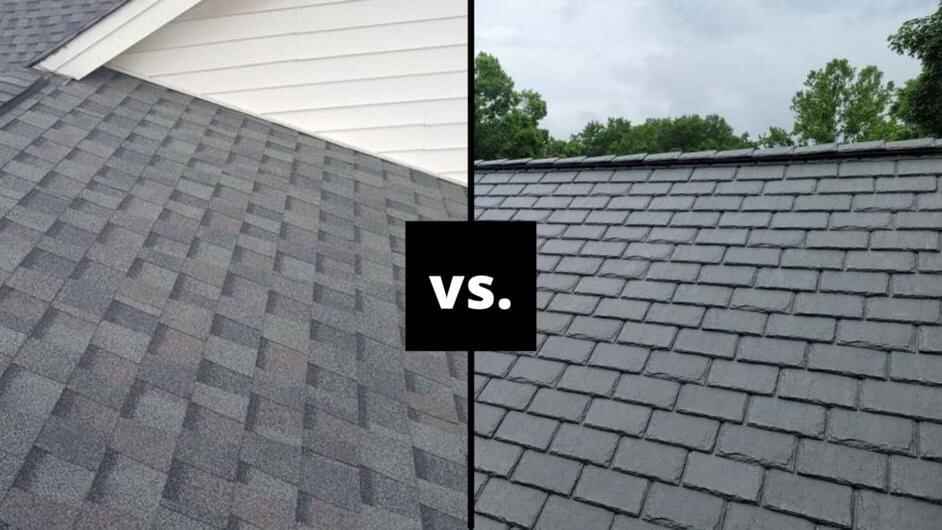When deciding between slate and shingle roofs, it’s essential to consider costs, longevity, maintenance, and environmental impact. Slate has a higher initial price but is cost-effective in the long run. Its unmatched aesthetics and potential to significantly increase property value are undeniable. Lasting over a century, slate easily surpasses shingles in durability and weather resistance. Minimal upkeep, such as timely slate repairs and regular debris removal, keeps it looking flawless. Additionally, slate’s low carbon footprint and insulation benefits make it an environmentally responsible choice. For expert guidance, consult a roofer who can provide intricate details and insights into which roof type best fits your needs.
Cost Comparison
When comparing the cost of slate roofing to shingle roofing, it becomes evident that the initial investment for slate is considerably higher. Despite the higher upfront costs, slate roofing offers exceptional cost-effectiveness over its lifespan due to its durability and minimal maintenance requirements. Moreover, the aesthetic appeal of slate roofing is unmatched, providing a timeless and elegant look to any structure. The long-term cost savings of slate roofing and its ability to enhance the property’s overall value and curb appeal make it a worthwhile investment for those seeking a durable and visually appealing roofing solution. While shingle roofing may be initially more budget-friendly, slate’s long-lasting beauty and durability ultimately make it a more cost-effective choice in the long run.
Longevity and Durability
Regarding longevity and durability, slate roofing significantly outperforms shingle roofing, making it a premier choice for homeowners. Slate roofs boast an impressive lifespan, often 100 years or more, which far exceeds the longevity of shingle roofs. This exceptional durability is partly due to slate’s natural resistance to severe weather conditions, such as heavy rain, snow, and hail, ensuring the roof remains intact and protective in even the harshest climates. Moreover, slate is an incredibly robust natural stone material, making it remarkably resistant to damage from impacts or fire. This inherent strength translates to fewer repairs and a lower likelihood of needing replacements, thus providing long-term cost savings.
Another advantage of slate roofing is its minimal maintenance requirements. Given its durable nature, homeowners can expect reduced upkeep over the roof’s extensive lifespan, contributing to its cost-effectiveness and appeal. These factors make slate roofing a superior option for those seeking a resilient, low-maintenance, and long-lasting roofing solution.
Maintenance Requirements
Maintaining a slate roof involves periodic inspections and minor repairs to guarantee its longevity and performance. Regarding repair techniques, it is essential to address any cracked or broken slates promptly. This can be done by carefully removing the damaged slate, replacing it with a new one, and ensuring it is adequately secured. Moreover, cleaning methods play a significant role in maintaining a slate roof. Regularly removing debris, moss, and algae can prevent water pooling and potential damage. Soft brushes or low-pressure power washing can effectively clean the slate without causing any harm. Following proper repair techniques and cleaning methods ensures your slate roof remains in top condition for years.
Environmental Impact
When comparing slate and shingle roofs about environmental impact, the following aspects should be considered:
- Energy Efficiency: Slate has a higher thermal mass, which can help with insulation and reduce heating and cooling energy consumption.
- Recyclability: Shingles are often made from asphalt, which can be challenging to recycle, whereas slate is a natural material that can be recycled or repurposed.
- Carbon Footprint: Slate has a lower carbon footprint than shingles due to its longevity and minimal processing.
- Sustainability: Shingles may need more frequent replacement, contributing to more waste, while slate roofs can last over a century, making them a more sustainable choice.
Other Roofing Tips

1 Comment
What Is the Most Durable Roofing Material | Premier Home Solutions
May 31, 2024[…] Slate Roof vs Shingle: Comparing […]